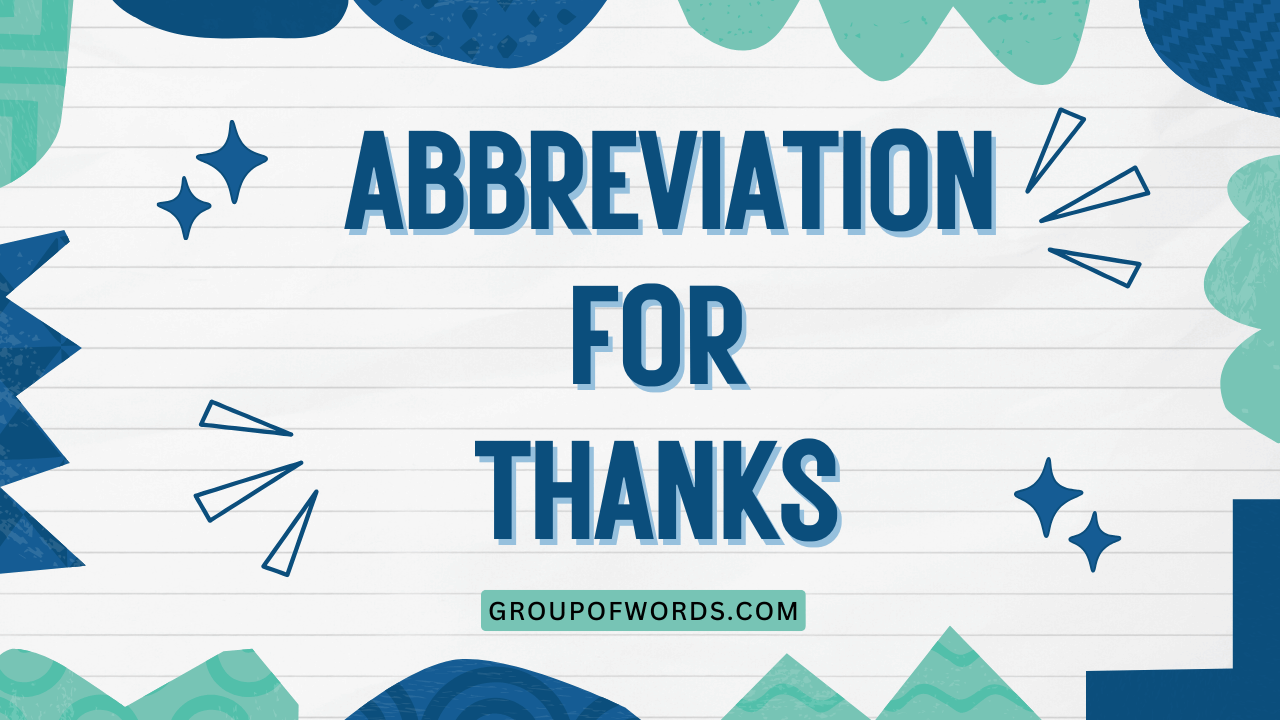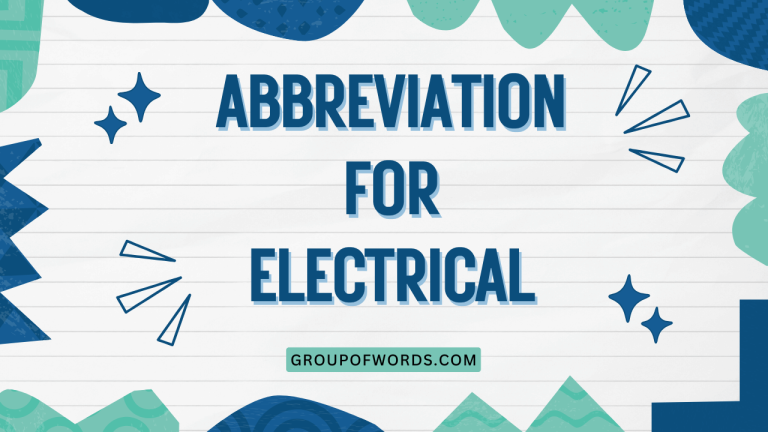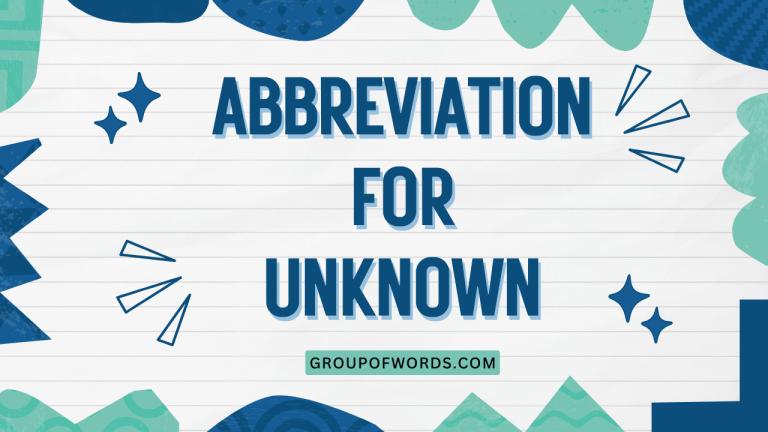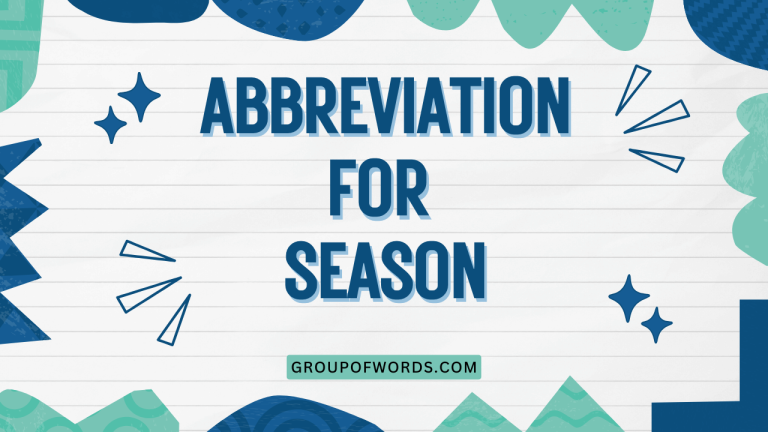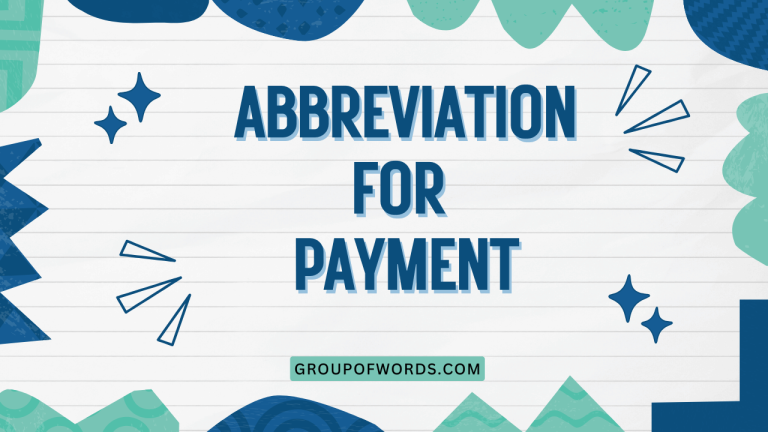Abbreviations for “Thanks”: A Comprehensive Guide
In the fast-paced world of digital communication, abbreviations have become commonplace. Among the many abbreviations used, those representing “thanks” are particularly frequent.
Understanding these abbreviations, their proper usage, and the contexts in which they are appropriate is crucial for effective and professional communication. This article delves into the various abbreviations for “thanks,” providing a comprehensive guide suitable for English language learners, professionals, and anyone looking to enhance their communication skills.
Mastering these abbreviations will not only save time but also ensure that your message is clear and well-received.
Table of Contents
- Introduction
- Definition of Abbreviations for “Thanks”
- Structural Breakdown
- Types and Categories of Abbreviations for “Thanks”
- Examples of Abbreviations for “Thanks”
- Usage Rules
- Common Mistakes
- Practice Exercises
- Advanced Topics
- FAQ
- Conclusion
Definition of Abbreviations for “Thanks”
Abbreviations for “thanks” are shortened forms of the word “thanks” or phrases expressing gratitude. These abbreviations serve to convey appreciation in a concise manner, particularly in written communication.
They are classified as contractions or initialisms, depending on how they are formed and pronounced. The function of these abbreviations is primarily to save time and space, especially in digital environments such as emails, text messages, and social media.
The context in which these abbreviations are used significantly impacts their appropriateness. Formal settings typically require more conventional expressions of gratitude, while informal settings allow for a wider range of abbreviations, including slang terms.
Understanding the nuance of each abbreviation is crucial to avoid miscommunication or offense. For instance, using internet slang in a business email would be highly inappropriate, whereas using a formal abbreviation in a casual text message might sound overly stiff.
Structural Breakdown
The structural breakdown of abbreviations for “thanks” involves understanding how they are formed and what each part signifies. Most abbreviations are created by either shortening the original word or phrase or by using the initial letters of each word in the phrase.
For example, “Thx” is a shortened version of “thanks,” while “TY” is an initialism derived from “Thank You.”
Some abbreviations, like “TIA” (Thanks In Advance), include additional information about the context or timing of the gratitude. These can be particularly useful when requesting assistance or information.
Understanding the full meaning behind each abbreviation is essential for using them correctly and effectively. The structure often reflects the level of formality, with shorter abbreviations generally being more informal.
Types and Categories of Abbreviations for “Thanks”
Abbreviations for “thanks” can be categorized based on their level of formality and the context in which they are typically used. The three primary categories are formal abbreviations, informal abbreviations, and internet slang.
Formal Abbreviations
Formal abbreviations are suitable for professional or academic settings. They are generally more conservative and less likely to be misunderstood.
Examples include “TY” (Thank You) and “TIA” (Thanks In Advance).
Informal Abbreviations
Informal abbreviations are appropriate for casual conversations with friends, family, or close colleagues. These abbreviations are more relaxed and may include variations like “Thx” or “Thnx.”
Internet Slang
Internet slang abbreviations are specific to online communication and social media. They often include acronyms and initialisms that are widely recognized within online communities, such as “TYSM” (Thank You So Much) or “TYVM” (Thank You Very Much).
Examples of Abbreviations for “Thanks”
Understanding the context in which each abbreviation is appropriate is crucial. The following examples illustrate the use of different abbreviations in various scenarios.
Formal Examples
In formal settings, such as business emails or academic correspondence, it’s important to use abbreviations that convey respect and professionalism. The following table provides examples of formal abbreviations for “thanks” and their appropriate usage.
The table below showcases how to use formal abbreviations to express gratitude in professional contexts. These examples are suitable for emails, formal letters, and other official communications.
| Abbreviation | Full Form | Example Sentence | Context |
|---|---|---|---|
| TY | Thank You | TY for your prompt response to my inquiry. | Business email |
| TY | Thank You | TY for your assistance during the presentation. | Formal speech |
| TY | Thank You | TY for considering my application. | Cover letter |
| TIA | Thanks In Advance | TIA for your cooperation in this matter. | Business email |
| TIA | Thanks In Advance | TIA for reviewing the attached document. | Formal report |
| TIA | Thanks In Advance | TIA for your time and consideration. | Formal letter |
| YW | You’re Welcome | “Thank you for your help.” “YW.” | Formal conversation |
| YW | You’re Welcome | Acknowledge assistance: “YW, glad I could help.” | Business email |
| YW | You’re Welcome | Response to gratitude: “YW, it was my pleasure.” | Formal thank-you note |
| NP | No Problem | “Thank you for taking care of that.” “NP.” | Business email |
| NP | No Problem | “Thanks for the quick fix.” “NP, always happy to help.” | Formal conversation |
| NP | No Problem | Response to thanks: “NP, I’m here to assist.” | Formal correspondence |
| Thx | Thanks | Thx for the information. | Semi-formal email |
| Thx | Thanks | Thx for your time. | Semi-formal letter |
| Thx | Thanks | Thx for the update. | Semi-formal memo |
| Many thanks | Many thanks | Many thanks for your assistance with this project. | Formal email |
| Many thanks | Many thanks | Many thanks for your support. | Formal speech |
| Many thanks | Many thanks | Many thanks for your contributions. | Formal report |
| Much appreciated | Much appreciated | Your help is much appreciated. | Formal email |
| Much appreciated | Much appreciated | Your time is much appreciated. | Formal letter |
| Much appreciated | Much appreciated | Your effort is much appreciated. | Formal evaluation |
| GR8ful | Grateful | I am GR8ful for your support. | Semi-formal email |
| GR8ful | Grateful | We are GR8ful for your contribution. | Formal presentation |
| GR8ful | Grateful | The team is GR8ful for your guidance. | Formal report |
| Appreciated | Appreciated | Your assistance is greatly appreciated. | Formal email |
| Appreciated | Appreciated | Your feedback is highly appreciated. | Formal survey |
| Appreciated | Appreciated | Your support is much appreciated. | Formal thank-you note |
Informal Examples
In informal settings, such as text messages or casual emails to friends, a more relaxed tone is acceptable. The following table provides examples of informal abbreviations for “thanks” and their appropriate usage.
The table below provides examples of informal abbreviations suitable for casual conversations. These are perfect for text messages, informal emails, and social media posts.
| Abbreviation | Full Form | Example Sentence | Context |
|---|---|---|---|
| Thx | Thanks | Thx for picking me up! | Text message |
| Thx | Thanks | Thx for the coffee! | Casual email |
| Thx | Thanks | Thx for being there. | Social media post |
| Thnx | Thanks | Thnx for the help! | Text message |
| Thnx | Thanks | Thnx for the ride. | Casual email |
| Thnx | Thanks | Thnx for understanding. | Social media post |
| TY | Thank You | TY for the invite! | Text message |
| TY | Thank You | TY for the gift! | Casual email |
| TY | Thank You | TY for being a friend. | Social media post |
| YW | You’re Welcome | “Thanks!” “YW!” | Text message |
| YW | You’re Welcome | Response to gratitude: “YW, anytime.” | Casual email |
| YW | You’re Welcome | Reply to thanks: “YW, glad to help.” | Social media post |
| NP | No Problem | “Thanks for covering me.” “NP!” | Text message |
| NP | No Problem | “Thanks for the favor.” “NP, happy to do it.” | Casual email |
| NP | No Problem | Reply to thanks: “NP, always here for you.” | Social media post |
| TIA | Thanks In Advance | TIA for the info! | Text message |
| TIA | Thanks In Advance | TIA for your help with this. | Casual email |
| TIA | Thanks In Advance | TIA for any advice! | Social media post |
| TKS | Thanks | TKS for the heads-up! | Text message |
| TKS | Thanks | TKS for the support. | Casual email |
| TKS | Thanks | TKS for everything! | Social media post |
| Thks | Thanks | Thks for the invite! | Text message |
| Thks | Thanks | Thks for the reminder. | Casual email |
| Thks | Thanks | Thks for the shoutout! | Social media post |
| Cheers | Thanks | Cheers for the help! | Text message |
| Cheers | Thanks | Cheers for the advice. | Casual email |
| Cheers | Thanks | Cheers for the good times! | Social media post |
Internet Slang Examples
Internet slang is best reserved for online forums, social media, and other informal digital environments. The following table provides examples of internet slang abbreviations for “thanks” and their appropriate usage.
The table below includes examples of internet slang for expressing gratitude. Use these abbreviations in online chats, social media comments, and other informal digital contexts.
| Abbreviation | Full Form | Example Sentence | Context |
|---|---|---|---|
| TYSM | Thank You So Much | TYSM for the follow! | Social media comment |
| TYSM | Thank You So Much | TYSM for the shoutout! | Online forum |
| TYSM | Thank You So Much | TYSM for the support! | Gaming chat |
| TYVM | Thank You Very Much | TYVM for the info! | Social media comment |
| TYVM | Thank You Very Much | TYVM for the help! | Online forum |
| TYVM | Thank You Very Much | TYVM for the advice! | Gaming chat |
| TYSVM | Thank You So Very Much | TYSVM for the gift! | Social media comment |
| TYSVM | Thank You So Very Much | TYSVM for the contribution! | Online forum |
| TYSVM | Thank You So Very Much | TYSVM for the assist! | Gaming chat |
| TNX | Thanks | TNX for the like! | Social media comment |
| TNX | Thanks | TNX for the feedback! | Online forum |
| TNX | Thanks | TNX for the carry! | Gaming chat |
| THX | Thanks | THX for the follow! | Social media |
| THX | Thanks | THX for the tip! | Online forum |
| THX | Thanks | THX for the help! | Gaming chat |
| TQ | Thank You | TQ for the support! | Social media comment |
| TQ | Thank You | TQ for the input! | Online forum |
| TQ | Thank You | TQ for the revive! | Gaming chat |
| Gr8ful | Grateful | I’m Gr8ful for the love! | Social media comment |
| Gr8ful | Grateful | I’m Gr8ful for the community! | Online forum |
| Gr8ful | Grateful | I’m Gr8ful for the team! | Gaming chat |
| MWAH | Kiss/Thanks | MWAH for everything! | Social Media (informal) |
| MWAH | Kiss/Thanks | Sending MWAH your way! | Text message (very informal) |
| LMA | Love and Appreciation | LMA for all you do! | Informal online chat |
| LMA | Love and Appreciation | Sending LMA for being awesome! | Social media comment |
| ILYSM | I Love You So Much (Gratitude) | ILYSM for the support! | Social media post |
Usage Rules
The proper usage of abbreviations for “thanks” depends heavily on the context and audience. Here are some general rules to follow:
- Formality: Choose abbreviations that match the level of formality required. Use formal abbreviations in professional settings and informal abbreviations in casual conversations.
- Audience: Consider your audience and their familiarity with abbreviations. Avoid using obscure or slang abbreviations that may not be understood by everyone.
- Clarity: Ensure that the abbreviation is clear and unambiguous. If there is a risk of misunderstanding, spell out the full phrase instead.
- Consistency: Maintain consistency in your usage of abbreviations. Avoid mixing formal and informal abbreviations within the same communication.
- Overuse: Avoid overuse of abbreviations, as it can make your communication seem lazy or unprofessional. Use them sparingly and only when appropriate.
Common Mistakes
One of the most common mistakes is using informal or slang abbreviations in formal settings. For example, using “TYSM” in a business email would be highly inappropriate.
Another common mistake is using abbreviations that are not widely recognized, leading to confusion.
Here’s a table illustrating some common mistakes and their corrections:
| Incorrect | Correct | Explanation |
|---|---|---|
| TYSM for the report. | TY for the report. | “TYSM” is too informal for a professional email. |
| Thx u 4 ur help. | Thanks for your help. | Avoid using excessive abbreviations in formal communication. |
| TIA! CU l8r. | Thanks in advance. See you later. | Mixing formal and informal abbreviations is inconsistent. |
| NP, I got it done. | No problem, I got it done. | While ‘NP’ is common, ‘No problem’ is clearer in formal contexts. |
| Thnx for ur time. | Thank you for your time. | In formal settings, it’s better to write out “Thank you” |
| YW Dude! | You’re welcome. | Adding “Dude!” makes it too informal for professional use. |
| TQSM, I’m so happy. | Thank you so much, I’m so happy. | TQSM is not universally recognized. |
| Thx a bunch! | Thank you very much! | Avoid very informal expressions in formal settings. |
| TIA broski | TIA, thank you. | “Broski” is too informal for professional settings. |
| LMA for the help! | Thanks for the help! | LMA is not widely recognized and can be misinterpreted. |
Practice Exercises
Test your understanding of abbreviations for “thanks” with the following exercises.
Exercise 1: Choose the appropriate abbreviation for each context:
| Question | Options | Answer |
|---|---|---|
| You are sending a business email to a colleague. Which abbreviation is most appropriate? | A) Thx B) TYSM C) TY D) TNX | C) TY |
| You are texting a friend to thank them for a ride. Which abbreviation is most appropriate? | A) TIA B) TY C) Thx D) TYVM | C) Thx |
| You are posting on social media to thank your followers. Which abbreviation is most appropriate? | A) TY B) TYSM C) TIA D) NP | B) TYSM |
| You are writing a formal letter requesting information. Which abbreviation is most appropriate? | A) TY B) TIA C) Thnx D) TYVM | B) TIA |
| You are responding to a friend’s thank you in a text message. Which abbreviation is most appropriate? | A) TY B) YW C) TIA D) TYSM | B) YW |
| You are thanking someone in an online gaming chat. | A) Gr8ful B) TIA C) TYVM D) Thx | C) TYVM |
| You are writing a semi-formal email to a work acquaintance. | A) TNX B) TY C) TYSM D) TIA | B) TY |
| You are posting a thank you message on an online forum. | A) THX B) TY C) TIA D) NP | A) THX |
| You are sending a quick thank you in a group chat with friends. | A) Thnx B) TY C) TYVM D) TIA | A) Thnx |
| You are expressing deep gratitude in a personal social media post. | A) TYSM B) TY C) TIA D) NP | A) TYSM |
Exercise 2: Correct the following sentences by replacing the inappropriate abbreviation with a more suitable one:
| Question | Answer |
|---|---|
| TYSM for your assistance with this project (business email). | TY for your assistance with this project. |
| TIA! Catch you later (formal letter). | Thanks in advance. |
| Thx 4 ur help (formal report). | Thank you for your help. |
| YW, dude! (business email) | You’re welcome. |
| TQ for the follow, broski! (formal presentation) | Thank you for the follow. |
| LMA for the support (business correspondence). | Thank you for the support. |
| NP, I handled everything, fam! (formal email). | No problem, I handled everything. |
| GR8ful for the tip, fam! (formal survey). | Grateful for the tip. |
| Thnx, peace out (formal thank-you note). | Thanks, goodbye. |
| Thx a bunch (formal letter). | Thank you very much. |
Advanced Topics
For advanced learners, understanding the etymology and evolution of these abbreviations can provide deeper insight into their usage. Additionally, exploring the cultural nuances associated with different abbreviations can help avoid misunderstandings in cross-cultural communication.
For example, some abbreviations may be more common in certain regions or age groups.
Another advanced topic is the use of abbreviations in different dialects of English. For instance, British English may have different abbreviations or usage patterns compared to American English.
Being aware of these variations can enhance your communication skills and prevent misinterpretations.
FAQ
Here are some frequently asked questions about abbreviations for “thanks”:
- Is it appropriate to use “TY” in a business email?
Yes, “TY” (Thank You) is generally acceptable in business emails, especially for quick acknowledgments. However, ensure the overall tone of your email remains professional. For more formal contexts, consider using the full phrase “Thank You.” - What does “TIA” stand for, and when should I use it?
“TIA” stands for “Thanks In Advance.” Use it when you are requesting something and want to express your gratitude beforehand. It’s suitable for situations where you expect assistance or cooperation. - Is “Thx” considered too informal for professional communication?
“Thx” is generally considered informal and is best reserved for casual conversations with colleagues or friends. In more formal professional settings, it’s safer to use “TY” or “Thank You.” - What is the difference between “TYVM” and “TYSM”?
Both “TYVM” (Thank You Very Much) and “TYSM” (Thank You So Much) are used to express a higher degree of gratitude. “TYSM” is slightly more emphatic than “TYVM” but is still considered informal. - Can I use internet slang abbreviations like “TQ” in formal settings?
No, internet slang abbreviations like “TQ” (Thank You) are highly informal and should only be used in online chats, social media, or other casual digital environments. Avoid using them in formal or professional communication. - How can I avoid misunderstandings when using abbreviations for “thanks”?
To avoid misunderstandings, always consider your audience and the context of your communication. If you’re unsure whether an abbreviation is appropriate, it’s best to spell out the full phrase. Additionally, be consistent in your usage and avoid mixing formal and informal abbreviations. - Are there any regional differences in the use of these abbreviations?
Yes, some abbreviations may be more common in certain regions or age groups. For example, certain internet slang terms may be more prevalent among younger users. Being aware of these variations can help you tailor your communication to your audience. - Is it okay to use abbreviations in handwritten notes?
In most cases, it’s better to avoid abbreviations in handwritten notes, especially if they are intended for formal occasions. Writing out “Thank You” or “Thanks” adds a personal touch and conveys sincerity.
Conclusion
Mastering the abbreviations for “thanks” is a valuable skill in today’s digital age. By understanding the different types of abbreviations, their appropriate usage, and common mistakes to avoid, you can communicate more effectively and professionally.
Remember to always consider the context and audience when choosing an abbreviation, and when in doubt, spell it out.
This comprehensive guide has provided you with the knowledge and tools necessary to navigate the world of abbreviations for “thanks.” Continue to practice and refine your understanding, and you’ll be well-equipped to express your gratitude appropriately in any situation. Effective communication is key to building strong relationships and achieving success in both personal and professional endeavors.
